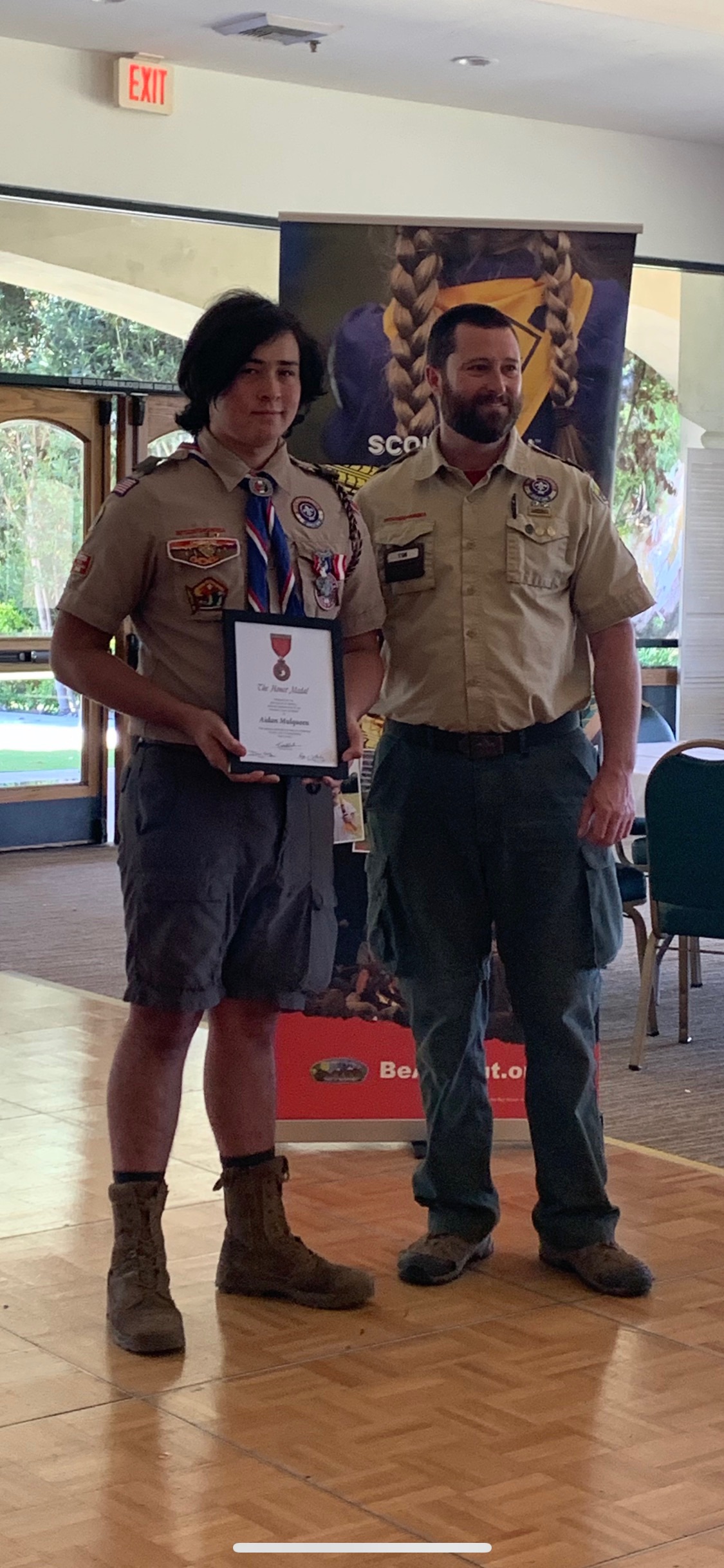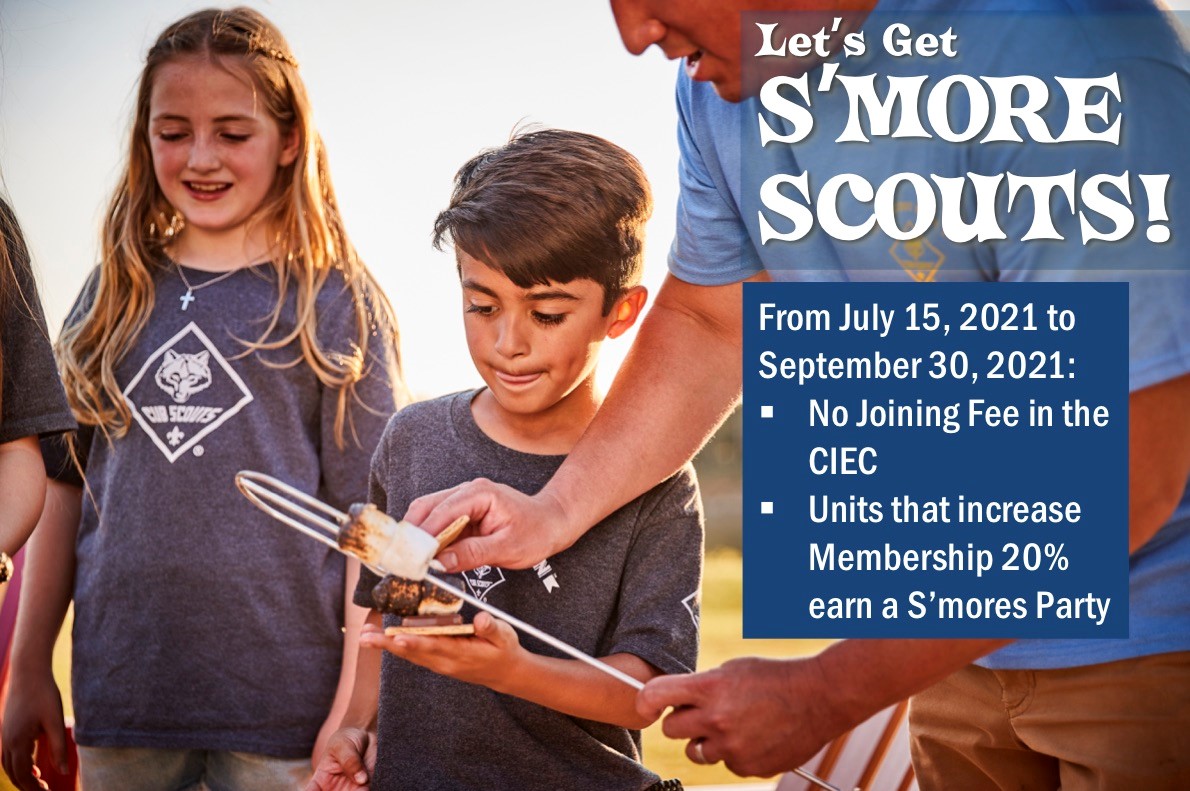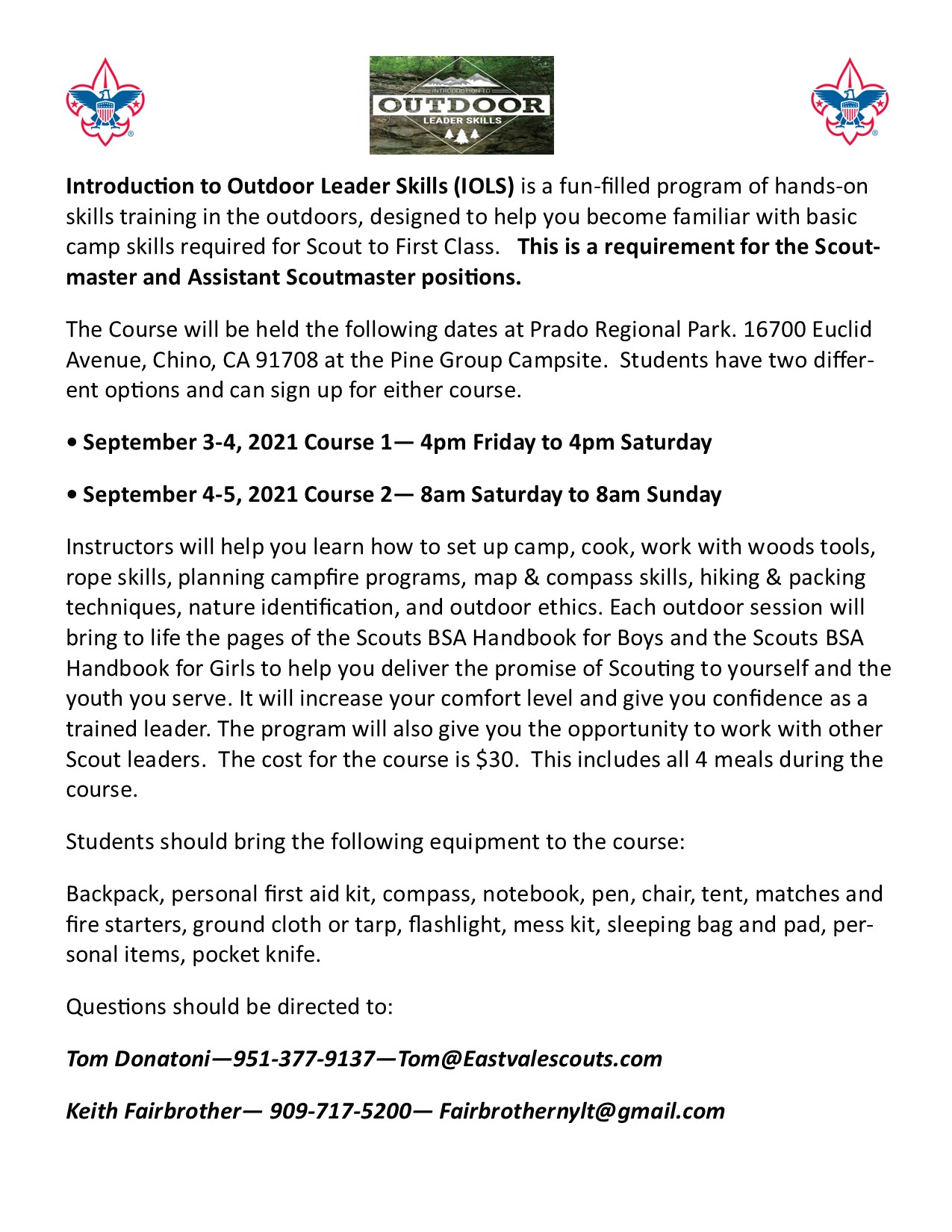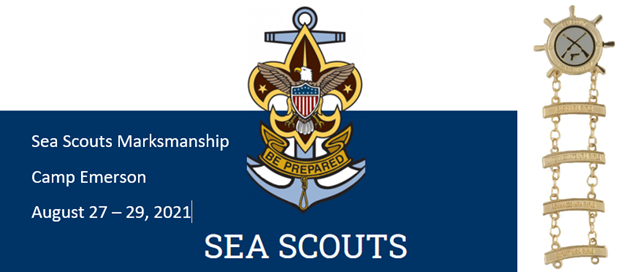
In Scouting, it’s said that feedback is a gift.
It’s also a critical component of the Guide to Advancement, the BSA’s official trail map to the mechanics of advancement in Cub Scouts, Scouts BSA, Venturing and Sea Scouts.
Feedback from volunteers from across the country was incorporated into the new and improved 2021 Guide to Advancement, available now.
Like all versions of the Guide, the 2021 update wasn’t created in a vacuum. It’s the latest evolution of a living document that’s updated every two years to ensure it meets the realities of packs, troops, crews and ships from across the country.
Just as sports leagues have rule books and computers have instruction manuals, the Boy Scouts of America has its official source for administering advancement in all BSA programs.
The Guide isn’t meant to be read cover to cover. Instead, it’s organized and indexed so you can quickly find answers to your advancement questions. Because it’s available in a PDF format, our favorite way to find something fast is by searching the document (control-F on a PC, command-F on a Mac) for a key word or phrase like “merit badge” or “time extension.”
For the 2021 update, a team of national-level professionals and volunteers went through every word of the Guide to make minor and major revisions. Many of the updates were included in response to frequently asked questions received by the National Advancement Program Team.
As you can see on Page 7, these sections were among the most heavily updated:
- Section 4: Mechanics of Advancement
- Section 7: The Merit Badge Program
- Section 8: Boards of Review: An Overview for All Ranks
- Section 9: The Eagle Scout Rank
- Section 10: Advancement for Members with Special Needs
- Index
As for other and more specific changes, here are 11 worth noting.
1. Online Scoutmaster conferences are OK but not preferred
The 2019 version of the Guide to Advancement specified that Scoutmaster conferences “should not be held in an online setting.”
In the 2021 version, that language has changed.
Section 4.2.3.5 says that Scoutmaster conferences are “meant to be face-to-face, personal and individual experiences. Though virtual conferences should be allowed, they should only be held when circumstances preclude a more personal approach.”
2. The definition of a ‘month’ gets clarified
It sounds like one of those existential questions in the same vein as “what is the meaning of life?”
The question: What is a month?
The answer has relevance in a number of Scouting requirements. For example:
- Cub Scouts: For the Arrow of Light rank, Scouts must be active in the Webelos den for at least six months since completing the fourth grade (or since becoming 10 years old).
- Scouts BSA: For the Eagle Scout rank, Scouts must be active in the troop for at least six months as a Life Scout.
- Venturing: For the Summit rank, Venturers must serve actively as crew president, vice president, secretary, treasurer, guide, historian, den chief, or quartermaster for a period of at least six months after earning the Pathfinder rank.
- Sea Scouts: For the Quartermaster rank, Sea Scouts must meet their ship’s bylaws requirement for active participation in ship meetings and activities for three months.
Some Scouters have wondered whether a month means, for example, July 1 to Aug. 1 (which is technically 31 days) — or if it actually means 30 days or even four weeks.
The 2021 Guide to Advancement clears this up once and for all.
It states that, “a month is a month regardless how many days it has. It is not defined as 30 days or four weeks. Feb. 2 up to Aug. 2, or Aug. 31 up to Feb. 28 (or 29 if a leap year) are examples of six-month periods. Six months does not mean 180 days.”
This also is important with the time extensions for the Eagle, Quartermaster and Summit ranks, which are outlined in section 9.0.4.0.
Six months from an 18th birthday (for Eagle) or 21st birthday (for Quartermaster and Summit) does not mean 180 days. It means the “corresponding day six months later.”
Examples:
- If an Eagle Scout candidate turns 18 on Oct. 15 and qualifies for and receives a six-month time extension, they must complete the remaining requirements by April 15 — even though that’s actually 182 days.
- If an Eagle Scout candidate turns 18 on Dec. 31 and qualifies for and receives a six-month time extension, they must complete the remaining requirements by June 30 (since June has no 31st day) — even though that’s actually 181 days.
3. Alternatives to merit badge ‘blue cards’ allowed
For decades, the “blue card” — officially known as the Application for Merit Badge — has been a recognizable, easy-to-use way for Scouts to track their merit badge progress and prove that they completed a badge under the guidance of a registered merit badge counselor.
Blue cards aren’t going anywhere, but the latest Guide (section 7.0.0.2) encourages councils and units to use other innovations — such as Scoutbook or computer-generated spreadsheets — to track advancement, if they wish.
Units and other councils are expected to accept these alternative forms of documentation as long as the documentation provides the information necessary to track and record the Scout’s progress.
4. More guidance given on what to do when merit badge requirements change
Scouts and Scouters have long known that the best place to find the most current merit badge requirements is this page on Scouting.org.
Once new or revised requirements appear on that page, any Scout beginning work on a merit badge must use the requirement as stated there. So it’s always best to check that page when starting a merit badge.
If a Scout has already begun work on a merit badge before the update, they may continue using the previous requirements.
For more guidance, including some special circumstances — like when changes are introduced in a revised merit badge pamphlet, youth handbook, or other official BSA publication or release — consult section 7.0.4.3 of the 2021 Guide.
5. Eagle Scout boards of review can occur up to 24 months after the 18th birthday
Unless an extension is granted (section 9.0.4.0), all requirements for the Eagle Scout rank must be completed before the Scout turns 18 — with one big exception.
The Eagle Scout board of review may occur after the Scout turns 18. (After all, we shouldn’t punish a young person if the adults on their board take several months to schedule a time to gather.)
In the 2019 Guide, the Scout needed local council approval to conduct their Eagle board of review three to six months after turning 18 and national approval to hold one six months or more after turning 18.
The 2021 Guide extends the limit to a full two years:
An Eagle Scout board of review may occur, without special approval, up to 24 months after a Scout’s 18th birthday. See “Boards of Review Must be Granted When Requirements are Met,” 8.0.0.2. Even if there are some concerns that requirements have not been fulfilled, the Scout is entitled to a board of review.
To hold a board beyond 24 months, the Scout will need to submit a Belated Rank Application (11.3.0.0).
The same guidance applies to the boards of review for the Summit rank in Venturing and Quartermaster rank in Sea Scouting — just substitute 21st birthday for 18th birthday.
6. Venturing, Discovery, Pathfinder and Summit are now ranks, not awards
The 2021 Guide to Advancement now refers to Venturing, Discovery, Pathfinder and Summit as “Venturing ranks,” not “Venturing awards.”
For example, you might say that “the Summit rank — Venturing’s highest — moves a young person into the role of servant leader.”
This change brings Venturing in line with Scouts BSA, where Eagle Scout is the highest rank, and Sea Scouts, where the highest rank is Quartermaster.
7. Venturing board of review decisions must be unanimous
Section 8.0.5.4 stipulates that board of review decisions for the Discovery, Pathfinder and Summit rank must be unanimous.
In the 2019 version, only a majority vote was required, with the chair casting the deciding vote in the event of a tie.
8. Sea Scout ‘bridge of review’ now called ‘board of review’
Sea Scouts, like Scouts BSA members and Venturers, participate in a sit-down conversation with three to six adults to discuss their progress and goals in the program.
This gathering was previously called a “bridge of review.” In the 2021 Guide to Advancement, this is now called a “board of review,” bringing the language in line with Scouts BSA and Venturing.
Courts of honor in Sea Scouts are still called “bridges of honor.”
9. Process for Eagle Scout time extensions modified
The 2021 Guide simplifies and clarifies section 9.0.4.0, which outlines the “tests” that a Scout must meet to qualify for an extension that allows them to earn the Eagle Scout rank up to six months after turning 18.
Note that councils can grant up to six months but don’t have to grant the full six months.
The 2019 Guide had five tests, while the 2021 Guide condenses that down to three:
- The member joined or rejoined (or became active again after a period of inactivity) in time to complete all requirements before turning 18.
- Through no fault or choice of the Scout, “an unforeseen circumstance or life-changing event with severe consequences has come to exist that now precludes completion of the requirements before the deadline.”
- “The circumstance is beyond the control of the Scout, could not have been anticipated or planned for, and was not or cannot be resolved in time to complete the requirements.”
Rather than pasting the entire section here, Scouts and Scouters who are wondering whether an extension is appropriate should read all of section 9.0.4.0.
The 2021 Guide to Advancement also adds section 9.0.4.2, about appealing a time extension denial, and appendix section 11.2.1.0, which includes the form for requesting such an appeal.
The guidance above also applies to time extensions beyond the age of 21 for the Summit and Quartermaster ranks.
10. Guidance for Cub Scouts who are home-schooled or educated in nontraditional ways
Section 4.1.1.0 of the 2021 Guide to Advancement adds a paragraph about Cub Scouts who are home-schooled or educated in nontraditional means.
In situations like those found in home-schooling or non- traditional education, where youth are working at grade levels that may not correspond to their ages, Cub Scouts should work on the rank that relates to their age, rather than their grade. When doing so, take the joining requirements for Scouts BSA into consideration to avoid completing the Arrow of Light too long before meeting the minimum age requirement for Scouts BSA.
11. Index revamped
As comprehensive as it is, the Guide to Advancement isn’t super long. You could read through it in a single evening and learn quite a bit about the thoughtful and fascinating approach to advancement in Scouting.
But sometimes you need to quickly jump to a specific section, and that’s where the index comes in.
The 2021 Guide to Advancement significantly revamps the index, expanding it to six pages from four and making it easier to quickly locate the information you need.
Download the 2021 Guide to Advancement
Grab your free copy of the 2021 Guide to Advancement here.

.jpg)








.jpg)

.jpg)




